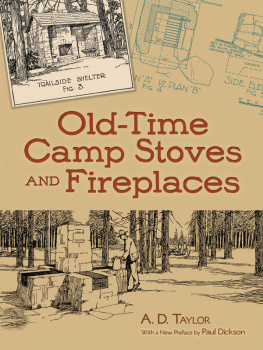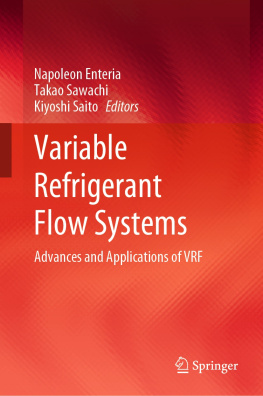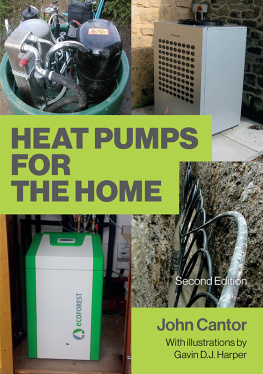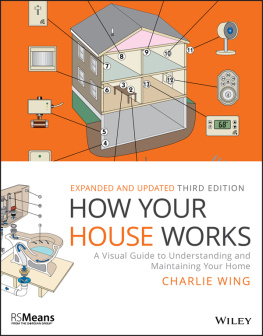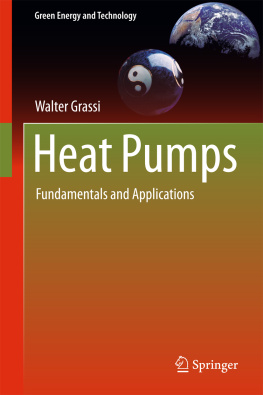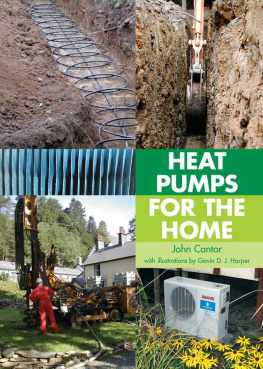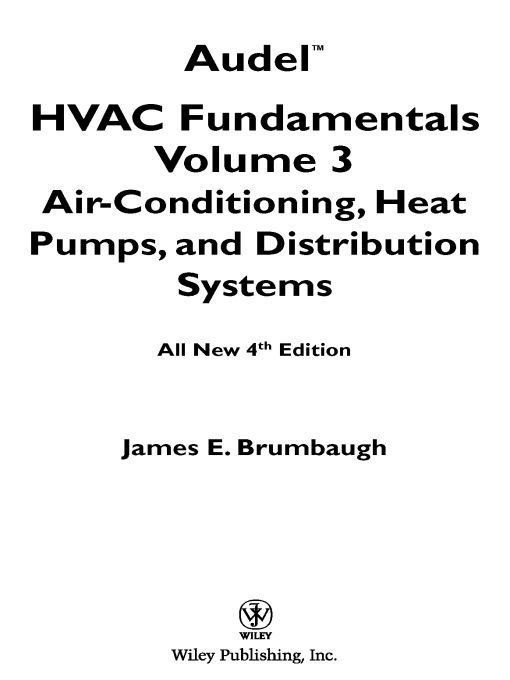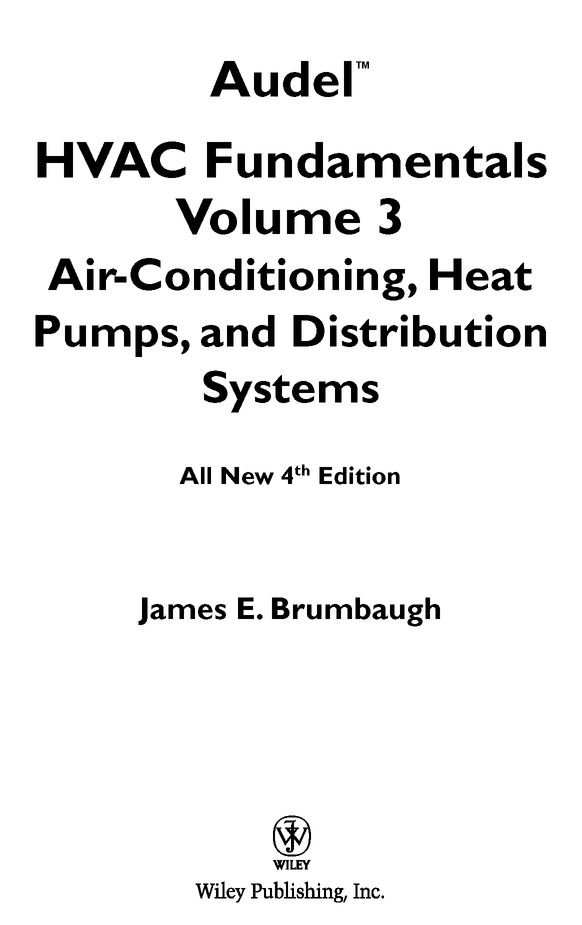Table of Contents
For Laura, my friend, my daughter.
Introduction
The purpose of this series is to provide the layman with an introduction to the fundamentals of installing, servicing, troubleshooting, and repairing the various types of equipment used in residential and light-commercial heating, ventilating, and air conditioning (HVAC) systems. Consequently, it was written not only for the HVAC technician and others with the required experience and skills to do this type of work but also for the homeowner interested in maintaining an efficient and trouble-free HVAC system. A special effort was made to remain consistent with the terminology, definitions, and practices of the various professional and trade associations involved in the heating, ventilating, and air conditioning fields.
Volume 1 begins with a description of the principles of thermal dynamics and ventilation, and proceeds from there to a general description of the various heating systems used in residences and light-commercial structures. Volume 2 contains descriptions of the working principles of various types of equipment and other components used in these systems. Following a similar format, Volume 3 includes detailed instructions for installing, servicing, and repairing these different types of equipment and components.
The author wishes to acknowledge the cooperation of the many organizations and manufacturers for their assistance in supplying valuable data in the preparation of this series. Every effort was made to give appropriate credit and courtesy lines for materials and illustrations used in each volume.
Special thanks is due to Greg Gyorda and Paul Blanchard (Watts Industries, Inc.), Christi Drum (Lennox Industries, Inc.), Dave Cheswald and Keith Nelson (Yukon/Eagle), Bob Rathke (ITT Bell & Gossett), John Spuller (ITT Hoffman Specialty), Matt Kleszezynski (Hydrotherm), and Stephanie DePugh (Thermo Pride).
Last, but certainly not least, I would like to thank Katie Feltman, Kathryn Malm, Carol Long, Ken Brown, and Vincent Kunkemueller, my editors at John Wiley & Sons, whose constant support and encouragement made this project possible.
James E. Brumbaugh
About the Author
James E. Brumbaugh is a technical writer with many years of experience working in the HVAC and building construction industries. He is the author of the Welders Guide, The Complete Roofing Guide, and The Complete Siding Guide.
Chapter 1
Radiant Heating
Heat is lost from the human body through radiation, convection, and evaporation. Radiation heat loss represents the transfer of energy by means of electromagnetic waves. The convection loss is the heat carried away by the passage of air over the skin and clothing. The evaporation loss is the heat used up in converting moisture on the surface of the skin into vapor.
Heat transfer, whether by convection or radiation, follows the same physical laws in the radiant heating system as in any other; that is, heat flows from the warmer to the cooler exposure at a rate directly proportional to the existing temperature difference.
The natural tendency of warmed air to rise makes it apparent that this induced air current movement is greater at the cooler floor and exterior walls of the average heated enclosure than at its ceiling. It is through absorption by these air currents that the radiant panel releases the convection component of its heat transfer into the room air.
The average body heat loss is approximately 400 Btu per hour; total radiation and convection account for approximately 300 to 320 Btu of it. Because this is obviously the major portion, the problem of providing comfort is principally concerned with establishing the proper balance between radiation and convection losses.
It is important to understand that bodily comfort is obtained in radiant heating by maintaining a proper balance between radiation and convection. Thus, if the air becomes cooler and accordingly the amount of heat given off from the body by convection increases, then the body can still adjust itself to a sense of comfort if the heat given off from the body by radiation is decreased. The amount given off from the body by radiation can be decreased by raising the temperature of the surrounding surfaces, such as the walls, floor, and ceiling. For comfort, the body demands that if the amount of heat given off by convection increases, the heat given off by radiation must decrease, and vice versa.
The principles involved in radiant heating exist in such commonplace sources of heat as the open fireplace, outdoor campfires, electric spot heaters, and similar devices. In each of these examples, no attempt is made to heat the air or enclosing surfaces surrounding the individual. In fact, the temperature of the air and surrounding surfaces may be very low, but the radiant heat from the fireplace or campfire will still produce a sensation of comfort (or even discomfort from excess heat) to those persons within range. This situation can occur even though a conventional thermometer may indicate a temperature well below freezing. Radiant heat rays do not perceptibly heat the atmosphere through which they pass. They move from warm to colder surfaces where a portion of their heat is absorbed.
This chapter is primarily concerned with a description of radiant panel heating, which can be defined as a form of radiant heating in which large surfaces are used to radiate heat at relatively low temperatures. The principal emphasis will be on hydronic and electric radiant floor heating.
Types of Radiant Panel Heating Systems
Radiant panel heating systems use water-filled tubing or electric heating mats or rolls installed in the floors, walls, and ceilings to distribute the heat. Radiant floor heating is by far the most popular installation method in residential and light-commercial construction.
Note
The word panel is used to indicate a complete system of tubing loops in a single room or space in a structure. It may also be used to indicate a premanufactured radiant floor heating panel.
Floor Panel Systems
Floor panels are usually easier to install than either ceiling or wall panels. Using floor panels is the most effective method of eliminating cold floors in slab construction. Another advantage of heating with floor panels is that much of the radiated heat is delivered to the lower portions of the walls. The principal disadvantage of using floor panels is that furniture and other objects block portions of the heat emission.
Floor panels are recommended for living or working areas constructed directly on the ground, particularly one-story structures. Partial ceiling or wall treatment may be used as a supplement wherever large glass or door exposures are encountered. A typical floor installation is shown in .
Ceiling Panel Systems
The advantage of a ceiling panel is that its heat emissions are not affected by drapes or furniture. As a result, the entire ceiling area can be used as a heating panel. Ceiling panels are recommended for rooms or space with 7-foot ceilings or higher. A ceiling panel should never be installed in a room with a low ceiling (under 7 feet) because it may produce an undesirable heating effect on the head.
Diagram of a typical radiant floor heating installation.


